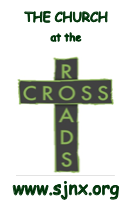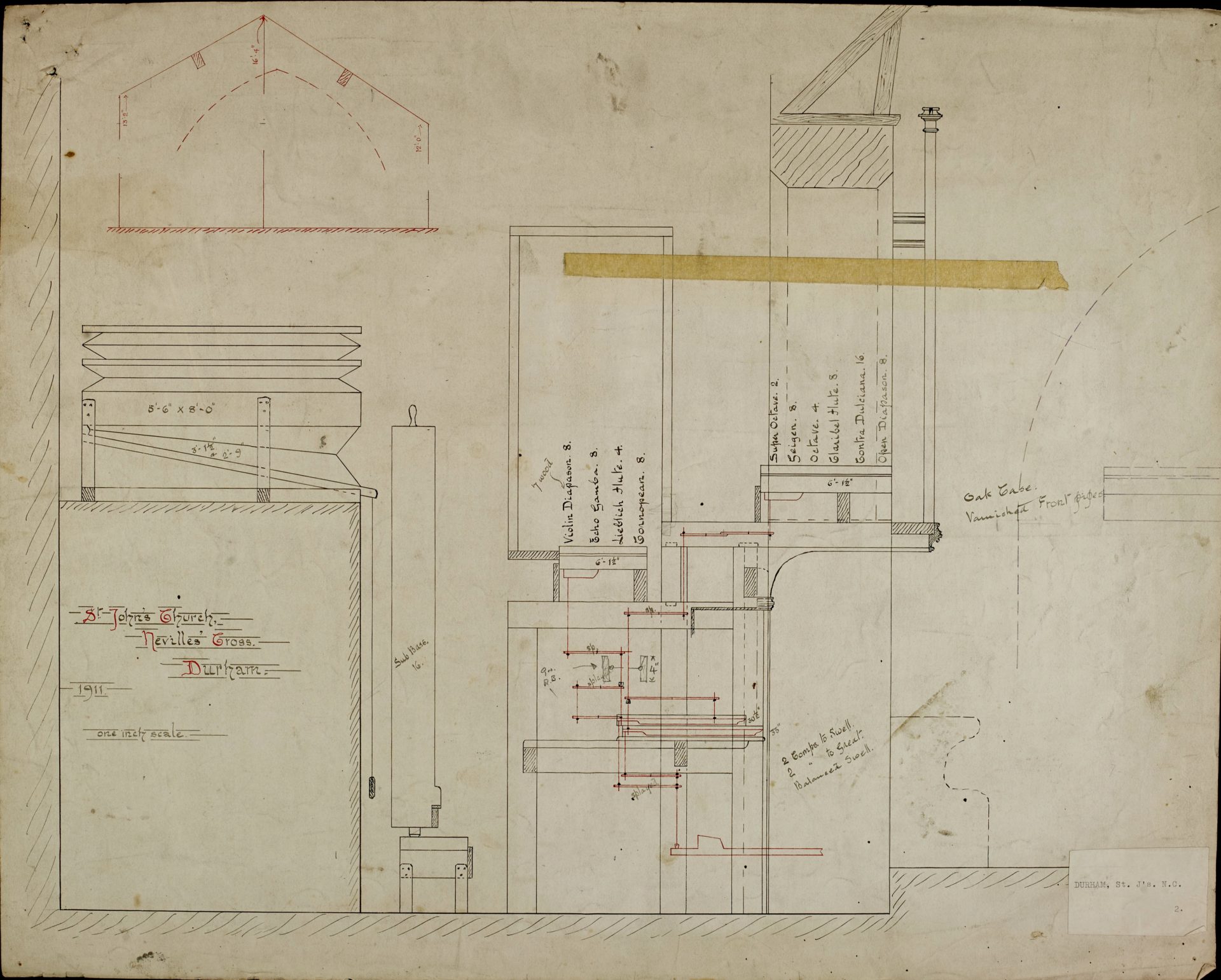The Organ
The Organ was built in 1912 by the local but internationally renowned firm of Harrison & Harrison and remains in its care. St Margaret’s Church, which established St John’s as mission station, was the church the Harrison family attended, and probably through this connection we have this delightful instrument.
Other organs built or rebuilt by Harrison & Harrison include those of Durham, Salisbury, Ely, Coventry Cathedrals, the Royal Festival Hall, Westminster Abbey, and more recently Canterbury Cathedral and York Minster.
SPECIFICATION
Pedal Organ
| 1. | Open Wood (prepared for) | 16 |
| 2. | Sub Bass | 16 |
| i. Great to Pedal | ||
| ii. Swell to Pedal |
Great Organ
| 3. | Contra Dulciana (t.c.) | 16 |
| 4. | Open Diapason | 8 |
| 5. | Geigen (prepared for) | 8 |
| 6. | Claribel Flute | 8 |
| 7. | Octave | 4 |
| 8. | Super Octave (installed 1976) | 2 |
| iii. Swell to Great |
Swell Organ
| 9. | Violin Diapason | 8 |
| 10. | Echo Gamba (installed 1915) | 8 |
| 11. | Lieblich Flöte | 4 |
| 12. | Cornopean | 8 |
| iv. Octave |
Balanced expression pedal to the Swell Organ
Two combinations pedals to Great
Two combinations pedals to Swell
The manual compass is 58 notes; the pedal 30 notes
The manual actions are mechanical; the pedal action is tubular pneumatic

The Organ

Great Pipework

Swell Pipework
A pipe organ of 12 stops was designed, incorporating some of the pipes of the existing organ in the church. (These are marked ‘old’ in the metal list.) However only 8 stops were installed in 1912, and the organ stills awaits a Pedal Open Wood 16’ and Great Gamba 8’ to complete the original scheme. When built, the organ was pumped by hand; electric blowing was added in 1941. The original hand pumping mechanism is still preserved in the organ.
The organ is enclosed in a chamber the North side of the Chancel. Nevertheless it speaks well into the church and gives a clear lead and solid support when accompanying the congregation. The small specification is surprisingly versatile, characteristic of organs designed by Harrison & Harrison from that period.
Metal List, showing the specification of the organ, the scaling of the pipes, and the name of the pipe maker for each stop. (Courtesy of Harrison & Harrison)


